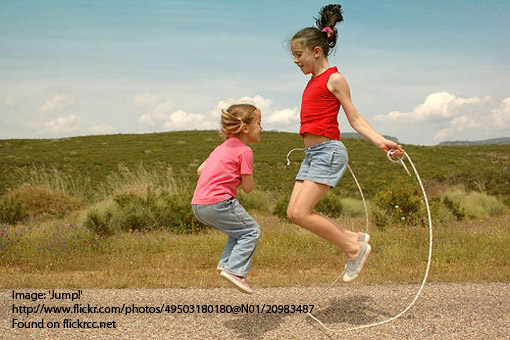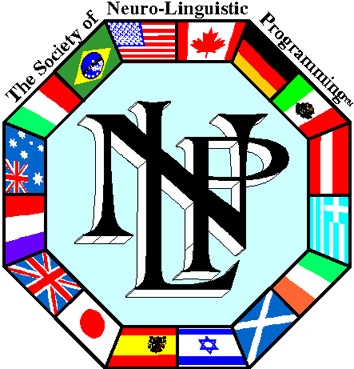NLP techniques
Pacing and leading
NLP secret
NLP techniques pacing and leading are all around us. You can observe pacing in almost any family and social situation.
Watch people having conversations in coffee shops or on the street. Notice the way they mirror each other in their posture.
If one person’s head is slightly cocked to the side, you may notice the other’s is too. If one has her arms folded, you might also see the other with folded arms.
Pacing and leading – unconscious gestures

My father was able to communicate very effectively with the use of his eyes.
It wasn’t until I was a young man that it became apparent to me that I had unconsciously picked up that behaviour, and it was reinforced in a court of law one day when a judge told me that I had very expressive eyes – a warning to be cautious if ever there was one.
So often we are unaware of the bodily gestures that other people adopt unconsciously.
I did not know, for example, that I frequently clasp my hands in general conversation until one day when I was in full flight, I glanced across the dining table at our granddaughter (not yet 18 months’ old) with clasped hands and an enormous smile on her face.
Much to the delight of the rest of the family it soon turned into her party piece!
NLP techniques pacing and leading – the way we fit into the world
It is the way we fit into the world. The longer we spend in each other’s company, the longer we are married, the more we look and act like each other.
You will know families who all seem to shout when they talk to you or to each other, and others who hardly speak above a whisper.
People like other people who are similar to them. They feel more comfortable in their presence.
So by matching the language, experience, beliefs and values of another you are beginning to gain and maintain rapport with them.
You may then modify your own behaviours and lead the other in a different direction.
NLP techniques pacing and leading – getting into the habit
Get into the habit of pacing (being careful all the time not to mimic). Calibrate someone by noticing first how they breathe. Is the breathing rapid or slow? Notice its general pattern.
As you get used to observing in this way you will see that when a person’s pattern of breathing changes it usually denotes also a shift in attitude.
Look also for colour and muscle changes. Particular places to look are around the mouth, the jaw and the corners of the eyes.
If you notice creases appearing, you may believe that the other is feeling tense. The lower lip may also be telling.
Look for changes in size, colour and shape and see if it appears to be swelling. You will get to know what the different state means for that particular person.
NLP techniques pacing and leading - voice
It goes without saying, I suspect, that voice plays perhaps the most major role in communication.
If you want to be a good communicator, listen and listen well.
Oftentimes you will have little difficulty in detecting a change in volume or pitch.
But listen also for tempo, clarity and rhythm.
NLP techniques pacing and leading – court room skills
These are skills that I as a lawyer, particularly as a prosecutor, came to practice very regularly for it is important, firstly, to establish rapport with your own witnesses.
I never knew what would face me when I entered the witness room before the commencement of a court sitting on any particular day.
What I could be pretty sure of though was that I would have a bunch of very nervous people.
The witnesses, some of them victims of crime, had waited a long time for this day and now they had to go into a witness box and be questioned by strangers.
To me it was very important that the first time my own witnesses saw me was not across a court room.
Rapport is better gained if the advocate meets the witness outside of court.
If time permitted, it was always good to pace a nervous witness by talking about something of greater interest than the court proceedings.
Talking about their children was always a great ice-breaker. Once you pace the witnesses in this way, they can gradually be led to the business of the day.
They can then be shown the court room before anyone else arrives, be told where to stand and what to expect, and by the time they actually get to the witness stand they will feel they have something in common at least with the advocate who is calling them.

NLP techniques pacing and leading - strangers
When a witness is called by the opposing party it is not possible, of course, to talk to them until they are in court and have been examined by their own counsel.
The cross-examining advocate oftentimes has a difficult dilemma.
On the one hand, he wishes to challenge strongly the accuracy and truthfulness of the witness’s account, but at the same time he believes that the witness has information that might be useful to his client’s case.
In those circumstances, the skilful lawyer will, with his opening questions, gently pace the witness by adopting a soft, friendly tone and deal with a few general matters about which there is really no dispute.
He will carefully observe the witness’s demeanour and pace it.
The witness will expect to be challenged, but this opening gambit will, if properly carried out, relax the witness.
As that happens, the advocate can then carefully but gently probe his recollection about those matters he considers will be helpful to the case and which do not threaten the witness’s security.

It is only when he has teased out all the information that requires the witness’s cooperation can the lawyer turn to the more difficult task of challenging the witness’s veracity in respect of more substantial parts of the evidence.
The everyday work of a courtroom lawyer is a good example of the sort of situation we find ourselves in where we need to concentrate on pacing, leading and gaining rapport.
Practice it at every opportunity and be surprised just how good you can get.
Gain FREE access to my self-confidence video
To gain free access to my self-confidence video enter your email address and first name in the box below. This will also keep you up-to-date with my free newsletter Inspirations.
As a bonus for subscribing you'll receive the first three chapters of my book Towards Success, where you can learn more about NLP techniques, from Anchors to Modelling, and my 50 favourite inspirational quotations.
Return from NLP Techniques Pacing and Leading to
The Secret of Mindpower & NLP Home
Return to Site Search & Contents Page

Change your life in just 5 weeks
Discover the pathway to success with my online video course. Learn more

Download NEW ebook Your Genius Within and find out how to uncover your own inner genius

NLP Articles
- Anchors
- Anchors explained
- Anger Management tips
- Anxiety Panic Attacks
- Beating disappointment
- Beating drug addiction
- Best self-help book
- Big events
- Body control module
- Body language attraction
- Body language flirting
- Body language in communication
- Body language interpretation
- Body language of a liar
- Body language signs
- Boost self-confidence
- Building Rapport
- Changing bad habits
- Changing beliefs
- Changing States
- Children
- Christmas (Holidays)
- Christmas & New Year greetings
- Chronic pain management
- Conquering Fear
- Crohn's Disease
- Cure for a Phobia
- Deal with your fear
- Deletion
- Determining your destiny
- Developing your senses
- Disaster to Triumph
- Distortion
- Drawing the line
- Embedded Commands
- Enthusiasm
- Exams
- Expecting the Best
- Expert Relationship Advice
- Eye accessing cues
- Fear of driving
- Fear of elevators
- Fear of flying
- Fear of the dentist
- Fear of vomiting
- Fear, Mental Blocks & Hesitation
- Fear, Uncertainty and Doubt
- Fight or flight response
- Finding Solutions
- Forever Worried?
- Friendly persuasion
- Generalisation
- Get the life you want
- Getting lucky
- Getting over your past
- Goal Setting Tips
- Goal Setting Tools
- Goal Setting Tools, More
- Great self-help books
- Grief
- Happy retirement
- Healthy Mind
- High blood pressure
- How long will I live?
- How to be lucky
- How to read body language
- Hypnosis & NLP
- Hypochondria
- Imagining perfect performance
- Improving speed reading
- Instant Mood Lift
- Interviews
- Knowing yourself
- Learn NLP
- Life Values
- Maintaining weight loss
- Make you thin
- Making it happen
- Managing change
- Meddling Mom
- Meeting People
- Mental rehearsal techniques
- Meta Model
- Metaphor
- Modelling
- Modelling Genius
- More NLP techniques for weight loss
- NLP Books
- NLP Courses
- NLP Practitioner Course
- NLP Master Practitioner Course
- NLP Secret
- NLP jargon buster
- NLP Modelling helped me
- OCD symptoms
- OCD treatment
- Overcoming low self-esteem
- Overcoming stage fright
- Pacing & Leading
- Persuasion
- Presuppositions
- Presuppositions (2)
- Problem solving
- Public Speaking
- Reaching agreement
- Reframing
- Self-confidence
- Self limiting beliefs
- Self-image
- Sportsmen Guide
- Stage fright tips
- Stammering
- States
- Stop binge eating
- Stop Smoking
- Subliminal Persuasion
- Success Principles
- Techniques for persuasion
- Techniques for weight loss
- The meaning of NLP
- Time & NLP
- Towards
- Towards & Away
- Ulcerative colitis
- Weight Loss
- Weight loss techniques
Articles on HYPNOSIS:
- Big events
- Conversational Hypnosis
- Covert hypnosis
- Deepening self-hypnosis
- Depression Hypnosis
- Handshake interrupt
- How to do self-hypnosis
- How to hypnotise your audience
- Hypnosis and Weight Loss
- Hypnosis NLP
- Hypnosis: Right or Wrong
- Hypnosis Stories
- Hypnotic language
- Hypnotism Stories
- Hypnosis story for you
- Hypnosis to quit smoking
- Instant self-hypnosis (age regression)
- Practical self-hypnosis
- Self-Hypnosis
- The Milton Model
Articles about THE SECRET of:
- Abundance Mentality
- Achieving more
- Beating Domestic Violence
- Being bothered
- Being Happy
- Best Self-help Book
- Conquering road rage
- Coping with criticism
- Dealing with pride
- Defeating stress
- Discover the secret of wealth
- Genius
- Getting off to sleep
- Getting over a break up
- Getting over your temper tantrum
- Health
- How to deal with grief
- Imagination
- Influence
- Love
- Making Money
- Managing others
- Memorising a Deck of Cards
- Memory
- My Success
- Organising Memory
- Overcoming tiredness
- Overcoming worry
- Perpetual energy
- Remembering
- Secret Law of Attraction books
- Sleeping well
- Speed Reading
- Super Memory
- Surviving a recession
- Surviving negativity
- The Secret Law of Attraction
- Towards
- Teachers of the Secret
- Waiting for God
- Wealth Building
- Weight Loss
Articles about COACHING:
- Barriers to effective communication
- Communication
- Executive Business Coaching
- Feedback
- Free interview tips
- Free Life Coaching
- Goal Setting Tips
- Goal Setting Tools
- Goal Setting Tools, More
- Life & Executive Coaching
- Personal Development Plan
- Problem solving
- Success Principles
- The Secret of my Success
- Time Management
Articles on GENIUS and MIND POWERS:
- Activating genius
- Become a genius
- How long will I live?
- Mind Powers
- Misty Reflections
- Modelling Genius
- The Secret of Genius
Articles about MEMORY:
Articles about RELATIONSHIPS:
- Beating domestic violence
- Body language flirting
- Expert relationship advice
- Healthy family relationships
- Hurt feelings
- Love
- Relationship problem advice
- Signs of true love
- The secret of getting over a break up
Articles on WEALTH:
Articles on WEIGHT LOSS:
- Best Weight Loss Plan
- Body control module
- Easy weight loss
- Hypnosis and Weight Loss
- Maintaining weight loss
- More NLP techniques for weight loss
- NLP techniques for weight loss
- NLP techniques to make you Thin
- NLP weight loss techniques
- Stop binge eating
- The Secret of weight loss
- Weight control help
- Weight loss tips
- Why have I lost weight?
Articles on SECRET and INSPIRATIONAL TEACHERS:
- Bill Harris
- Bob Proctor
- Dr John F DeMartini
- Hale Dwoskin
- Jack Canfield
- Joe Vitale
- John Assaraf
- Lisa Nicholls
- Michael Bernard Beckwith
- Stephen R Covey
Real Women of Genius Articles:
Real Men of Genius Articles:
- Abraham Lincoln
- Albert Einstein
- Antoni Gaudi
- Carl Jung
- Charles Darwin
- Charles Dickens
- Christopher Wren
- Confucius
- George Washington
- Hannibal
- Horatio Nelson
- Isaac Newton
- Julius Caesar
- Lawrence of Arabia
- Leonardo da Vinci
- Michelangelo
- Mohatma Gandhi
- Napoleon Bonaparte
- Nicolas Copernicus
- Oscar Wilde
- Rembrandt
- Robert Burns
- R L Stevenson
- Socrates
- Walt Disney
- William Shakespeare
- Wolfgang Amadeus Mozart








New! Comments
Have your say about what you just read! Leave me a comment in the box below.